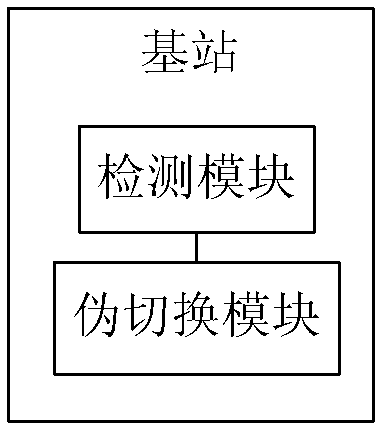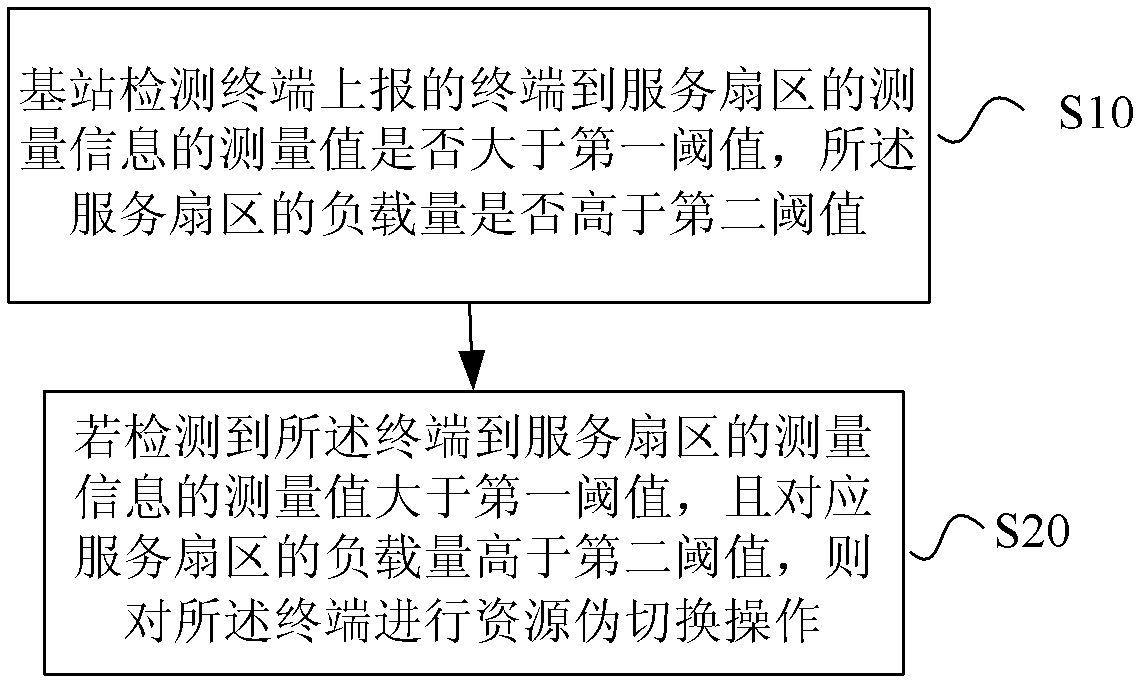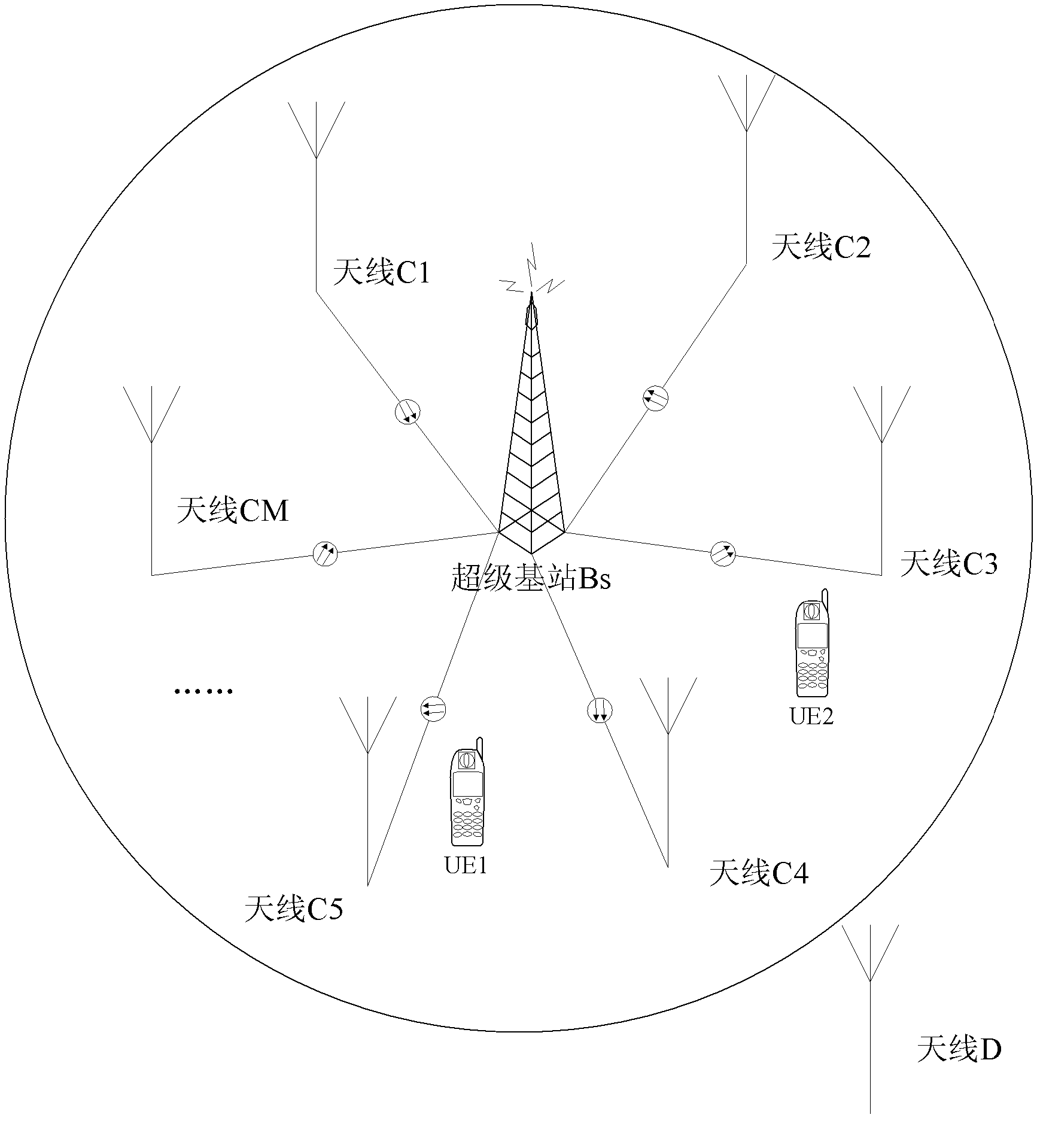Resource distribution method and base station of distributed antenna system
A distributed antenna and resource allocation technology, applied in the field of communication, can solve problems such as increasing system throughput
- Summary
- Abstract
- Description
- Claims
- Application Information
AI Technical Summary
Problems solved by technology
Method used
Image
Examples
Embodiment 1
[0090] Suppose in a distributed antenna system, such as image 3 As shown, there is a super base station, denoted as Bs, with M antenna stations, antennas C1, C2...CM are connected to the super base station through optical fibers, so it can be said that the sectors represented by these antenna terminals belong to the super base station Bs, and the antennas The sector represented by D does not belong to the super base station Bs, and the sector to which each antenna station belongs is recorded as a set C, C={C1, C2...CM}, and the system configures thresholds R, L1, L2, assuming that there is one Terminal U, whose serving sector is CS, belongs to set C, then the communication process between terminal U and base station Bs is as follows: Figure 4 shown, including the following steps:
[0091] Step S101, the terminal U periodically reports measurement information;
[0092] Wherein, the measurement information includes the measurement information from the terminal U to the servi...
Embodiment 2
[0107] Assume that in a distributed antenna system, there is a super base station, denoted as Bs, with M antenna stations, and the sector to which each antenna station belongs is denoted as set C, C = {C1, C2, ..., CM} , the system configures thresholds R, L1, and L2. Suppose there is a terminal U whose serving sector is CS and belongs to set C. The communication process between terminal U and base station Bs includes the following steps:
[0108] Step S201, the super base station periodically counts the load of all sectors in the sector set C, and finds out the index set T of all sectors whose load is less than a given threshold L2, T={T1, T2,...TP} ;
[0109] Among them, the calculation method of the load is:
[0110] Load = (the number of resource blocks that have been allocated + the number of resource blocks that have not been allocated but need to be allocated) / the total number of resource blocks.
[0111] Step S202, the terminal U periodically reports measurement info...
Embodiment 3
[0130] Assume that in a distributed antenna system, there is a super base station, denoted as Bs, with M antenna stations, and the sector to which each antenna station belongs is denoted as set C, C={C1, C2...CM}, the system Configure the thresholds R, a, and b. Assume that there is a terminal U whose serving sector is CS and belongs to the set C. The communication process between the terminal U and the base station Bs includes the following steps:
[0131] Step S301, the super base station periodically counts the loads of all sectors in the sector set C, and calculates the thresholds L2, L1, and finds out the index set T of all sectors whose loads are less than the threshold L2, T={T1, T2, ...TP};
[0132] Among them, the calculation method of the load is:
[0133] Load = (the number of resource blocks that have been allocated + the number of resource blocks that have not been allocated but need to be allocated) / the total number of resource blocks.
[0134] The calculation ...
PUM
 Login to View More
Login to View More Abstract
Description
Claims
Application Information
 Login to View More
Login to View More - R&D
- Intellectual Property
- Life Sciences
- Materials
- Tech Scout
- Unparalleled Data Quality
- Higher Quality Content
- 60% Fewer Hallucinations
Browse by: Latest US Patents, China's latest patents, Technical Efficacy Thesaurus, Application Domain, Technology Topic, Popular Technical Reports.
© 2025 PatSnap. All rights reserved.Legal|Privacy policy|Modern Slavery Act Transparency Statement|Sitemap|About US| Contact US: help@patsnap.com



